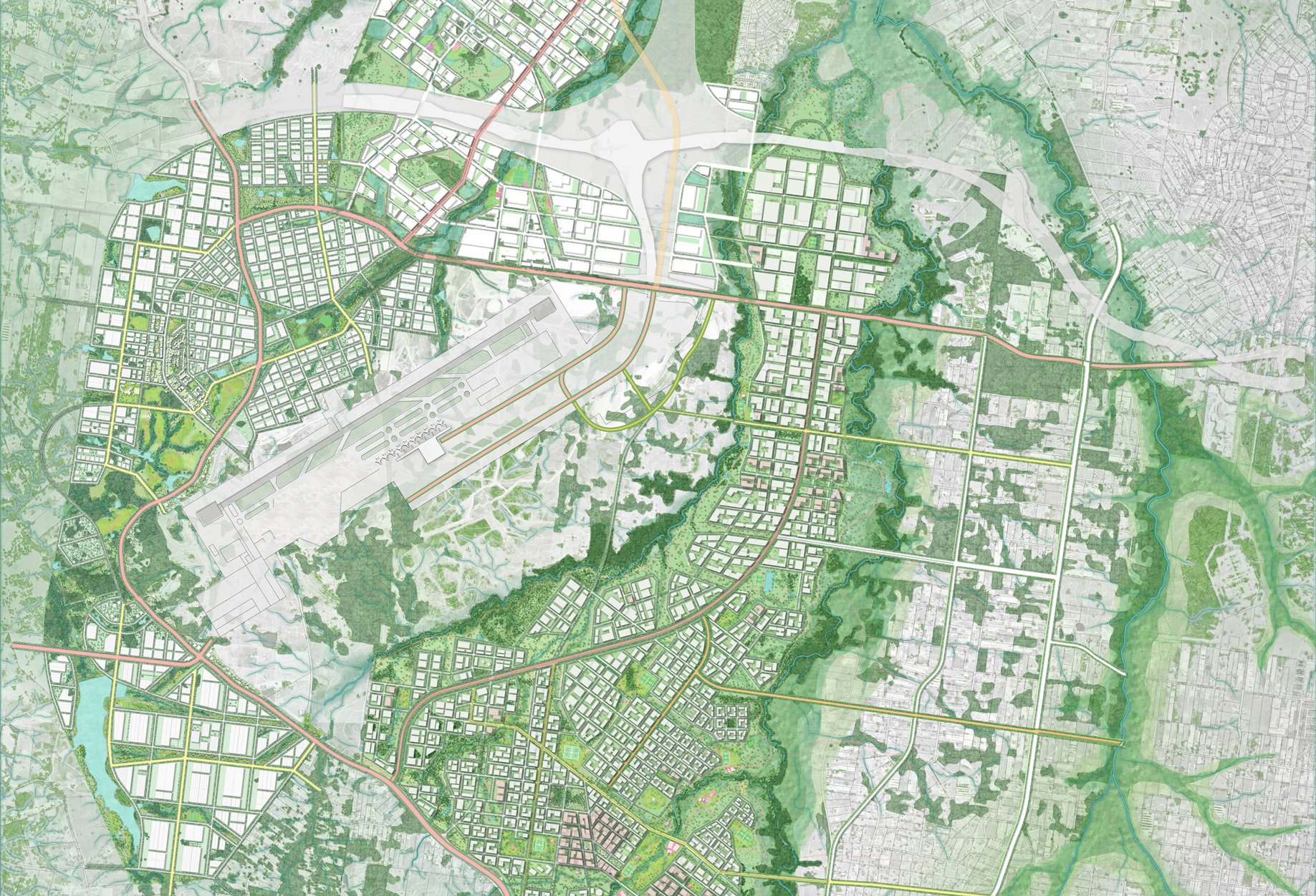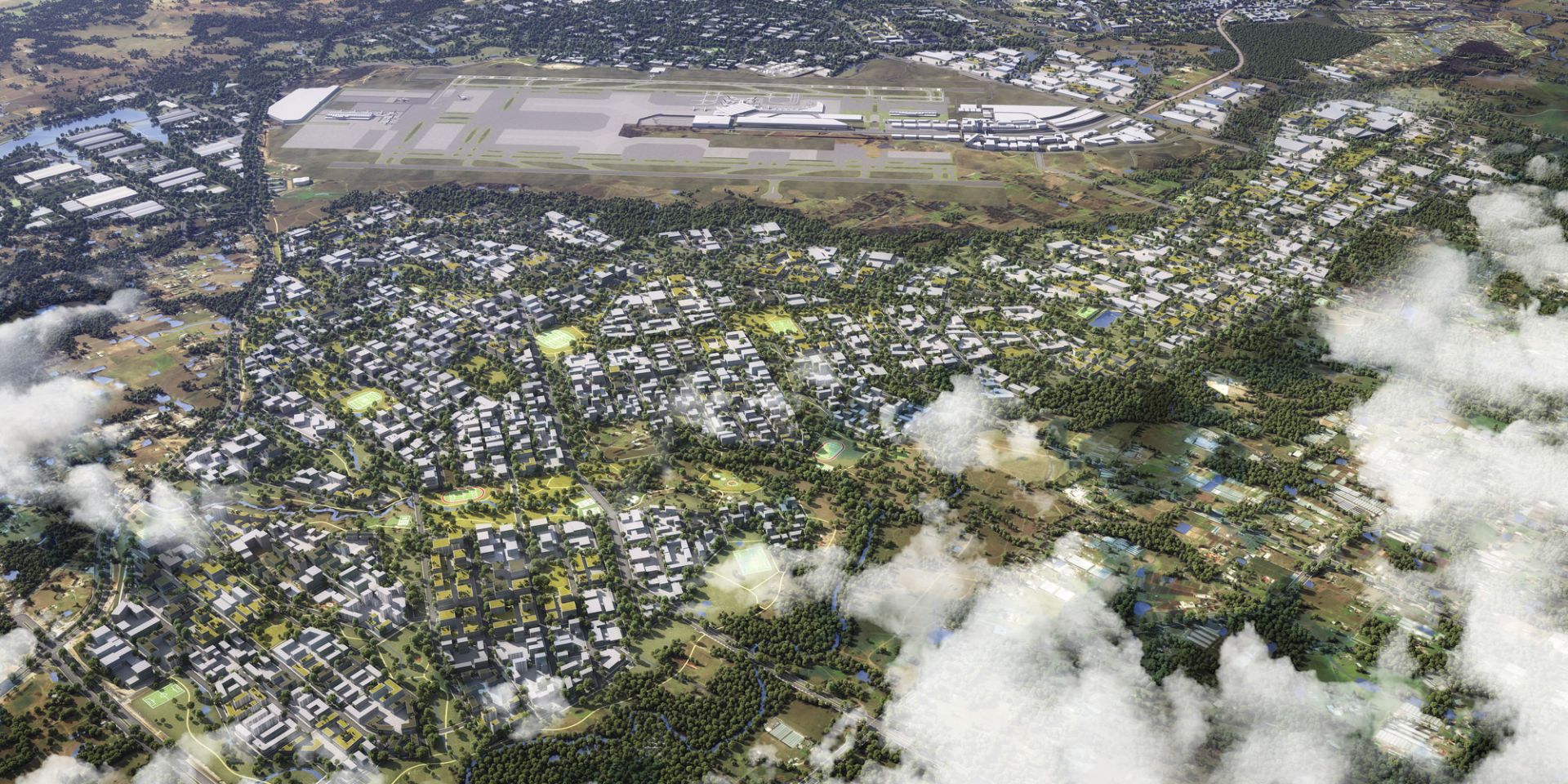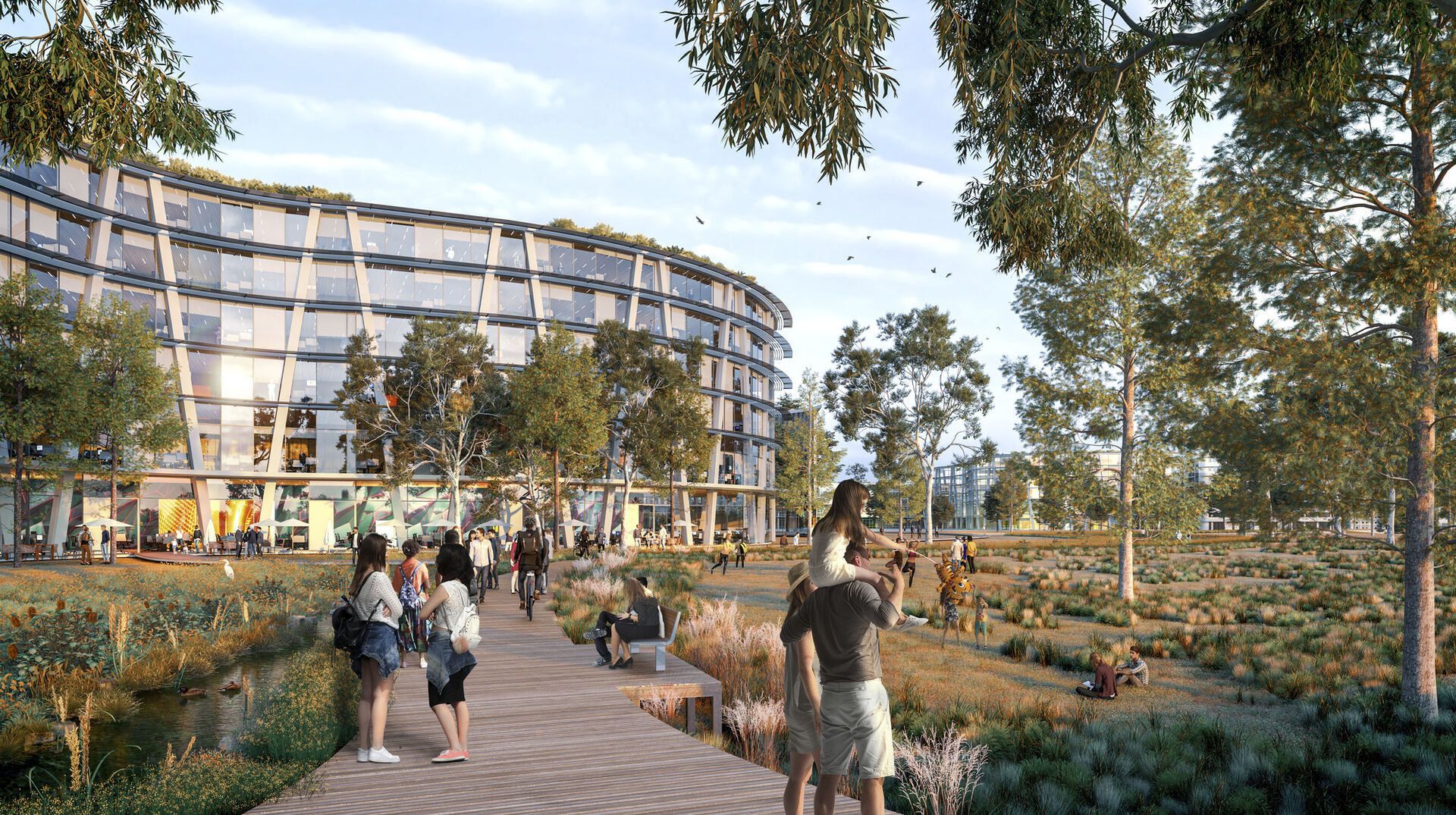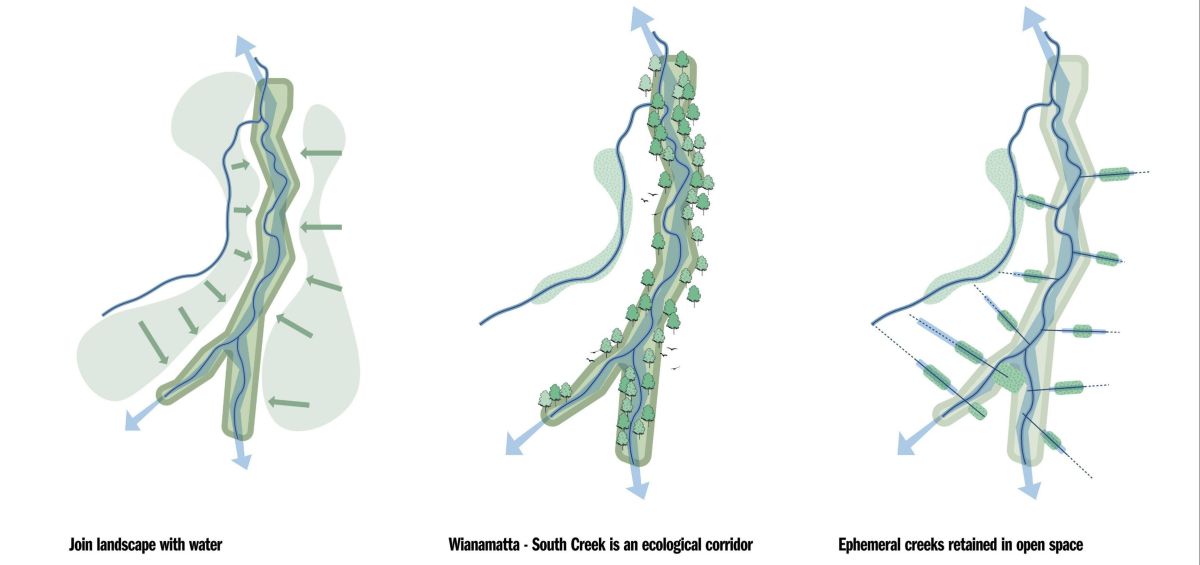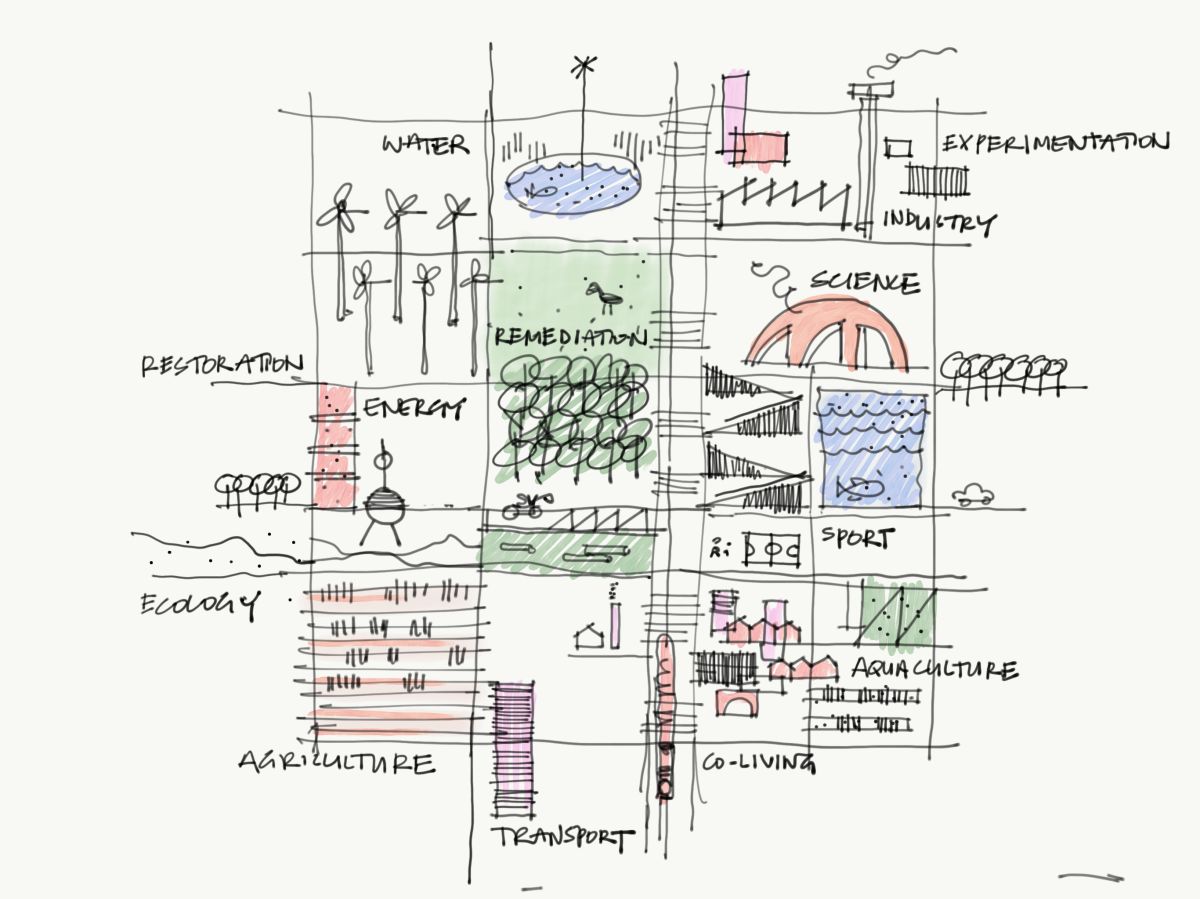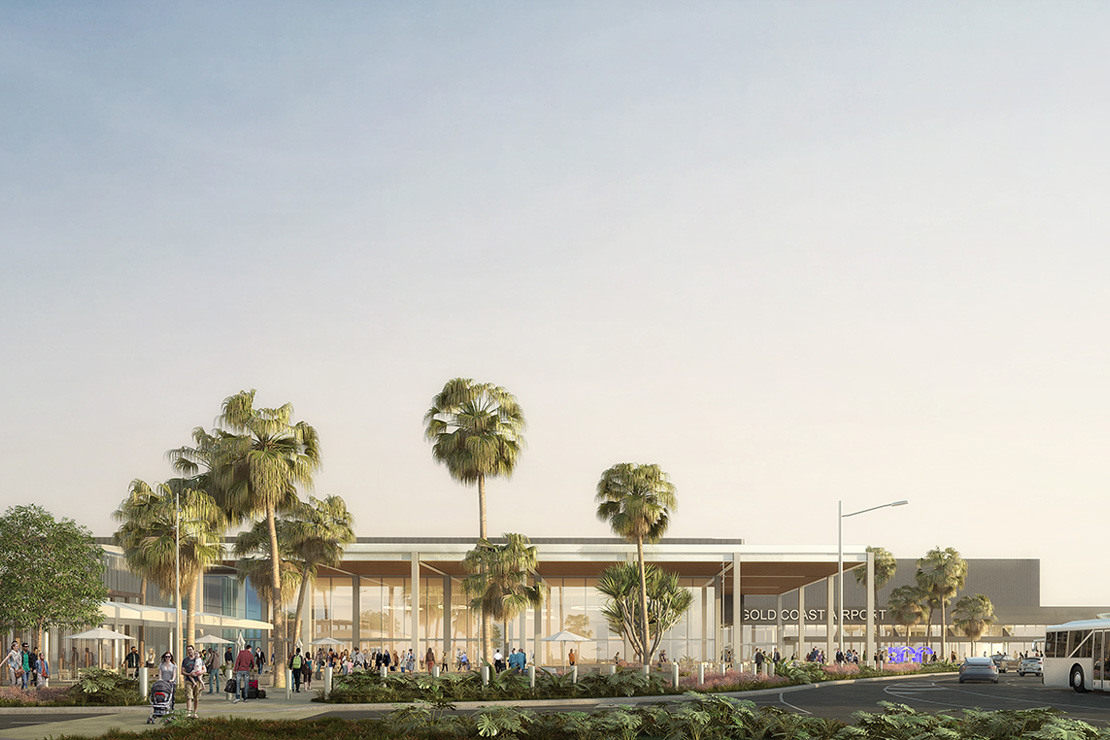Sustainability highlights
We designed Aerotropolis as a resilient city, ready to respond to the unexpected and the inevitable, from extremely hot summers and bush fires to severe storm events and flooding. It’s also an opportunity to showcase regenerative development principles, meaning Aerotropolis aims to put more back into the environment, the economy and community than it takes out.
Sustainable highlights include:
- Water: The traditional impact of development is that water is pushed into a regional stormwater network, which can cause potential flash flooding, erosion, and ecological disruption. By keeping waterways in their natural place, we enhance the ecology of Wianamatta-South Creek and the entire region. This helps mitigate the damaging effects of severe storm events and flooding — and keeping soil moist is fundamental to the whole cooling of the city.
- Green streets: In response to the rise of extremely hot summers and bush fires, green, tree-lined streets improve the liveability, urban cooling and sustainability outcomes of the city, while also emphasising Western Sydney’s character. The master plan works with natural systems to really shape place by arranging street and urban patterns to visually and physically connect with high and low points of topography as well as vegetation and existing waterways.
- Designing for Country: Both flora and fauna related to this site are now critically vulnerable. This new city is co-designed with First Nations Australians in Western Sydney to include spaces where the local community can share culture and knowledge and continue to care for Country. Their voices are guiding the design of the city and informing all the objectives of the greater plan.
- Landscape-led urbanism: We’ve embedded both landscape and waterscape in the urban master plan by using existing waterways as a structuring system for each precinct. We’ve also protected ridgetops and creek lines as open space providing visual connection between sky, vegetation, land form and landscape.
- Circular economy: Aerotropolis is designed around a circular economy where all elements are created to be reused and the aim during development is zero waste. For example, material from existing local quarries is being re-utilised to build the region’s metro stations.
